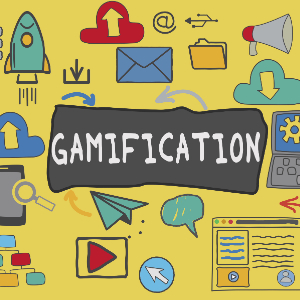
Getting the business engaged with data governance can sometimes be a challenge. Any sort of driver to make that a more organic experience for your organization will be an asset. At NAIT (the Northern Alberta Institute of Technology), we have put together a process to visually identify and connect our reports to Data Governance.
The Common Data Matrix
One of the things that forms a foundation for our Data Governance is “The Common Data Matrix.” You can read all about it in the book “Non-Invasive Data Governance,” written by Robert S. Seiner (TDAN.com’s publisher and the President and Principal of KIK Consulting & Educational Services). To build this foundation, we went to each business unit in our organization to discuss their relationship with data, specifically, the production, use, and definition of data.
We started with high-level domains of data, to understand in broad stokes how that unit worked with our data assets. Moving from there, we got an understanding of subdomains within those domains. Finally, we extrapolated to understanding the individual fields within those subdomains. In the data matrix itself, we categorize only the high-level and sub domains of data. We also looked for cases where people were managing data outside of our enterprise systems, such as spreadsheets, to see if there were any pain-points we could help with or hidden high value data assets.
A Governance Framework
With our foundational document in place, we were able to construct a framework for data governance with a focus that aligns with the business. As we documented our Common Data Matrix, we discovered the many challenges the business faces. Given that knowledge, we applied a focus to our data governance. In our case, data quality, architecture, and lineage were all key issues that needed special attention. Our focus was on Data Quality.
A focus for data governance doesn’t mean that you neglect any of the things that a governance program does, but it gives you constant alignment to what is import to the business as they consume data assets. Governance can have many focus areas; the Data Governance Institute does an excellent job describing this. Among potential focus areas are a focus for Data Quality, Business Intelligence, and Cyber Security. Even with a focus, each Governance initiative adheres to a set of universal principles.
At its core, your governance framework creates an aura of trust around data-driven decision making.
The Approval Process
The idea of applying a watermark or an approval to reports isn’t a new one. However, a grade for those reports makes it a much more interactive experience for the business. Feel free to use these images yourself if you like. The overall concept is simple; for a given report, how closely does it align to our data governance goals?
These types of grades are easy to understand for all types of users and instantly creates a gamification across the business. The first time we heard, “We want a gold stamped report,” we knew this was working well.
The stamps themselves are placed front and center on our reports, regardless of the technology used to produce it (Tableau, SSRS, Power BI, etc.) We also make the stamp a click-able interactive artifact. We’ve communicated to users that the stamp can be clicked on, and that will bring them to a repository of documentation about the report, including a breakdown of why it got the grade it did. This is our interpretation of data governance at the point of usage. It’s important that business users are presented with the results of a functioning data governance program. These approval stamps are a real, visual, and tactile artifact that engages users in data governance as they are consuming content created by your data assets.
The Rubric
Creating a consistent rubric is important for this function. Report owners need to understand why they got the stamp they did and what they can do to improve it. They also need to understand why a report scored the way it did such that they can responsibly use it. For that to be communicated clearly to all, a rubric must be available and clear enough to be understood.
We focused on documentation of all data in the Common Data Matrix (2 points), Automated Data Quality (4 points), Supported by Our Reporting Architecture (8 points), Data Lineage Completely Documented (4 points), and Report Owners Responsible for Updated Definitions and Security (3 points). Bronze reports have a score between 1-9, silver 10-14, gold 15-19, and platinum a perfect 20.
With each approval stamp, we provide a one-page document describing the grade the report received in each category and provide suggestions on how that can be improved. We make that document available to all users by clicking on the stamp.
The Results
Since we have instituted stamps, we have had several reports improve their grade from Silver to Gold, we will also soon have our first platinum report, and more business units are requesting to have their content stamped and aligned with our governance program. This shows how adding a little gamification to your reporting content can help engage the business with your data governance.

